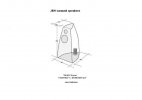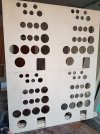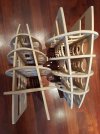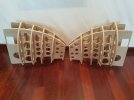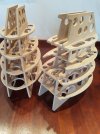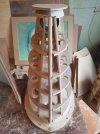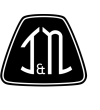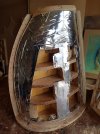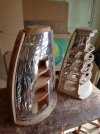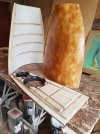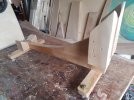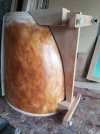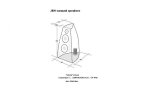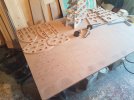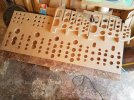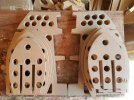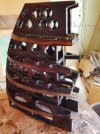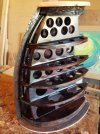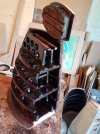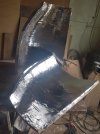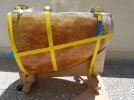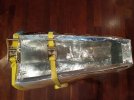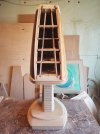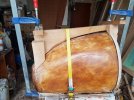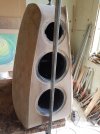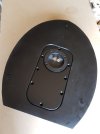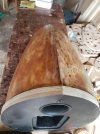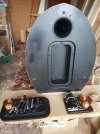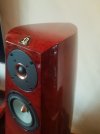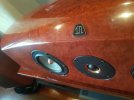This is place to where I turn your attention to my way of measuring volume with a complex shape, you will never achieve maximum results if you do not do this!
And so, we have a clear concept for the type of speakers and the shape of the cabinet - it is not an easy task to calculate - a fact!
In order to find the exact volume of my office, I need to do a few preparatory procedures;
From waste material I made this gadget, that takes part in the measurements and when assembling the cabinet;
View attachment 64112 View attachment 64113
I am approaching to the measurement of the internal volume;
- My method of finding an internal volume of a complex construction was discovered about 2500/ from the Archimedes genius/.
The volume per liter of water is equal to the volume of 1 kg. and 1l. Water = 1 kg,
-their specific resistances are the same, with very little error.
I will say it in a more understandable way:
- if we have 20 liters of water in a bucket, this bucket will weigh approximately -20 kg.
- if we have another liquid in this bucket, we may have 20 liters, but we will not have 20 pounds.
In my method of measurement, i do not immerse the inner construction in the water, just I measure the weight and deduct it from the total volume.
There is no simpler and more accurate method for finding the volume of a complex body,
Archimedes method is flawless!
In my method of measurement, i do not immerse the inner construction in the water, just I measure the weight and deduct it from the total volume.
There is no simpler and more accurate method for finding the volume of a complex body,the method of Archimedes is flawless! Any other material we use to fill, we need to know the "ro" of this material.
On the second picture, the red line is the waterline, the vas of cabinet must be fill with water next to it / everything must be perfectly horizontally!/.
In this photo the red line is the waterline, the vas of cabinet must be fill with water next to it / everything must be perfectly leveled/.
Let's assume that the density of MDF is 0.75 kg. of cubic decimeter/ average value by tables /. This is 75% of the actual reduced volume. The reduced volume error is: 3.5 / 0.75 = 4.6 liters actual reduced volume, and the whole volume is 43-4.6 = 38.4 liters. The total error of 39.6 liters is 1.2 liters or -3.1%. The ways to reduce the insaid of volume, are incomparably easier than the increase, the point is that this is the desired vision and the compensation must be done inside the volume. At this volume, I can safely mount another W18EX001, i. we are talking about a 2, 1/2 tape loudspeaker and that sends the project into an initial phase.
The old project stayed in the past ...
The new one project;
View attachment 64202View attachment 64203View attachment 64204View attachment 64205
After preprocessing of the internal ribbing I can now start collecting the cabinets;
Now I can make the exact measurement of the volume.
And that's 31.5l, just as much as I need!
View attachment 64206View attachment 64207View attachment 64208

























